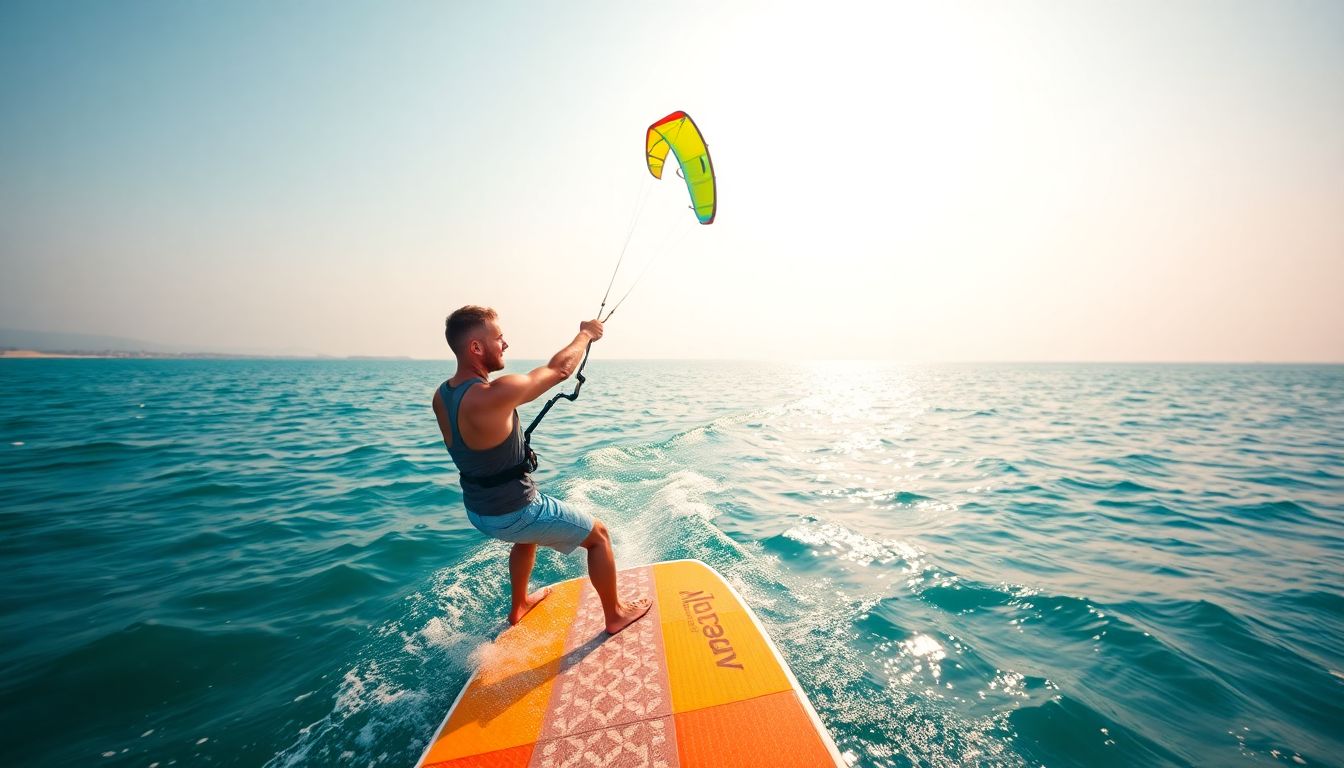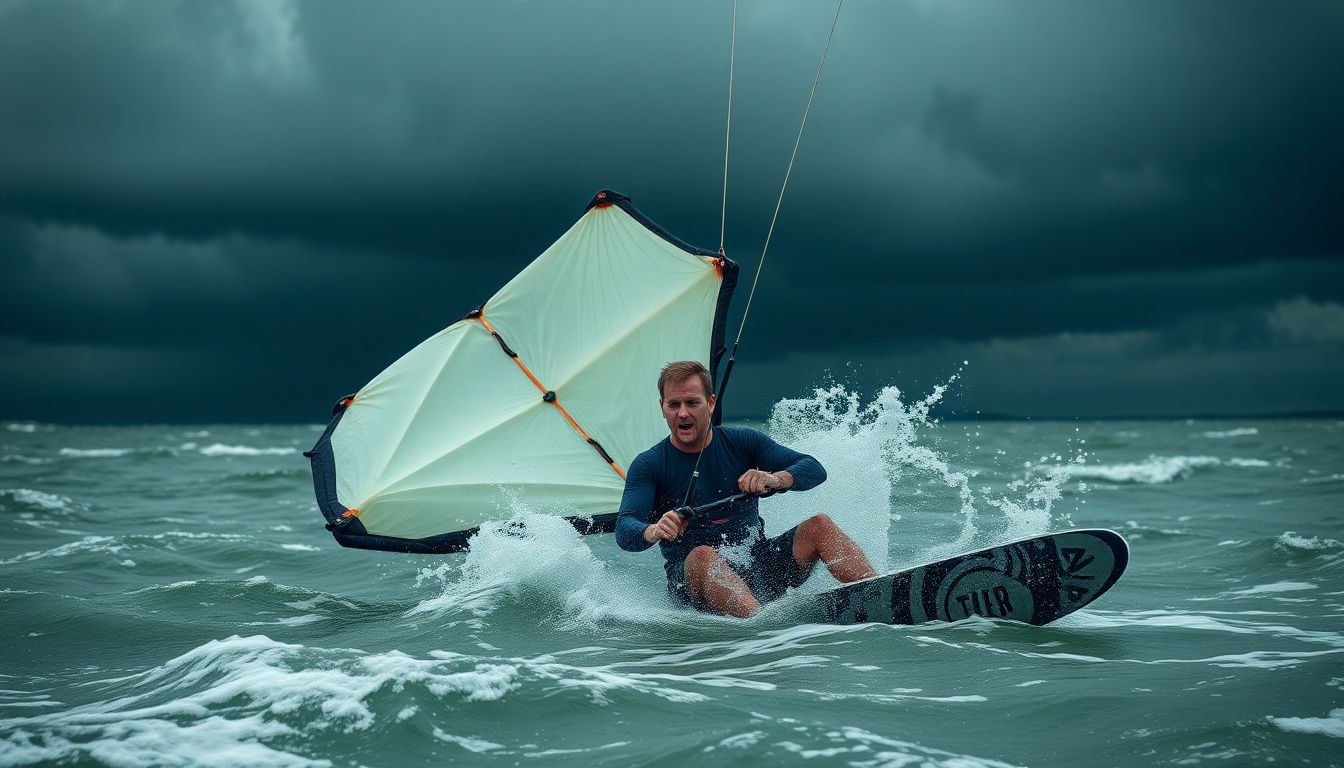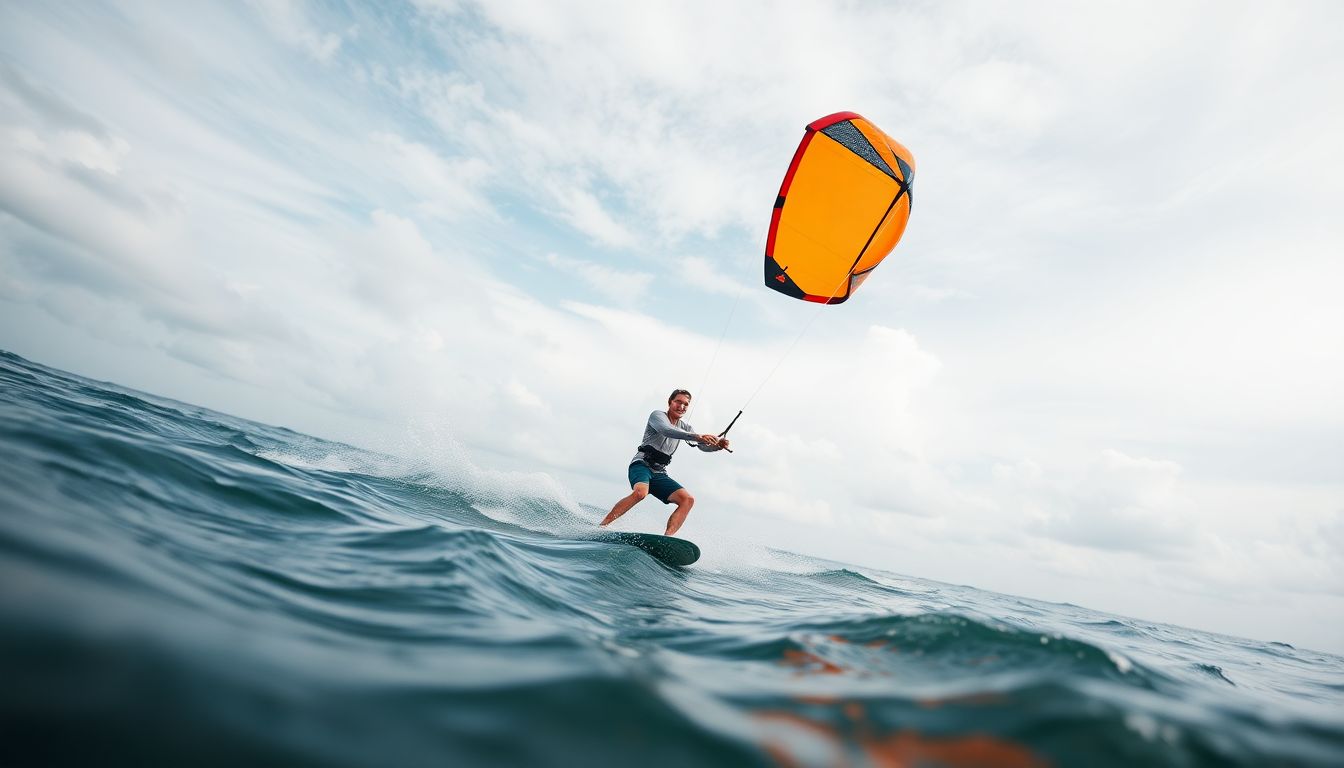Kitesurfing is more than just an exhilarating water sport; it’s a growing passion that has attracted millions worldwide. However, along with its excitement comes potential risks, especially for beginners. Statistics show that many accidents occur due to a lack of preparation and safety knowledge. Prioritizing safety is essential for making the most of your kitesurfing experience.
This article aims to provide crucial safety tips that every beginner kitesurfer should know. Whether you’re looking for advice on equipment or understanding the conditions, this guide has you covered.
We will explore various topics, including finding the right conditions, the importance of professional instruction, mastering basic kite control, and respecting your environment and fellow kitesurfers. Let’s dive in!
[Also see our article: Make Money Renting Jet Skis: The Ultimate Guide].
Finding the Right Conditions and Equipment
Choosing the Right Location
Selecting a suitable spot is crucial for your safety. Here are factors to consider:
- Wind Speed: Aim for 12-20 knots for beginners.
- Water Conditions: Flat water is ideal to start with.
- Crowds: Choose areas with fewer people to avoid collisions.
- Accessibility: Locations close to rescue services are preferable.
Popular beginner-friendly spots include the bays of Maui, the flat waters of the Outer Banks, and the beaches of Tarifa, Spain.
Essential Gear for Beginners
Investing in the right equipment is vital. Here’s what you need:
- Kite: Choose a stable, beginner-friendly kite.
- Board: A larger board offers more stability.
- Harness: A comfortable harness reduces body fatigue.
- Wetsuit/Drysuit: Protects you from cold water and injury.
- Helmet and Impact Vest: Essential for safety.
Look for gear with safety certifications to ensure quality.
Understanding Wind Conditions
Learn to measure wind speed, usually in knots. Wind speeds between 12-20 knots are typically safe for beginners, allowing you to control the kite without being overpowered. Knowing average wind speeds in your area can also guide your planning.
Getting Professional Instruction
Importance of Professional Lessons
Statistics reveal that nearly 90% of kitesurfing accidents involve untrained individuals. Proper lessons provide crucial knowledge, skills, and confidence. As an expert once said, “Investing in professional instruction is investing in your safety.”
Finding a Reputable Instructor
Select a certified instructor based on these criteria:
- Qualifications: Look for certifications from recognized organizations.
- Experience: Instructors with years of teaching typically provide better guidance.
- Reviews: Read feedback from past students to gauge effectiveness.
What to Expect in a Lesson
During beginner lessons, you will learn essential skills such as:
- Kite control: How to manage your kite in various conditions.
- Body dragging: Techniques for moving in the water with the kite.
- Water starts: Getting up on the board from the water.
Mastering Basic Kite Control
Kite Self-Launching and Landing
Follow these steps for safe kite launching:
- Setup: Lay the kite down with the leading edge facing into the wind.
- Launch: Have a friend hold it steady while you walk back.
- Control: Use smooth movements to steer the kite.
Common mistakes include launching too early; wait for a steady wind before attempting.
Body Dragging Techniques
Body dragging helps you understand kite control and build confidence in the water. Swim while steering the kite above you to move through the water. This skill is vital for recovering your board and developing comfort in different conditions.
Understanding Kite Safety Systems
Familiarize yourself with quick release systems. These mechanisms allow you to detach from the kite quickly in emergencies. Regular practice and understanding how they work significantly enhance your safety.

Water Safety and Awareness
Understanding Water Conditions
Before hitting the waves, check:
- Weather Forecasts: Know about wind changes and storm warnings.
- Water Hazards: Be aware of currents, tides, and obstacles.
Communicating with Others
Always have a buddy system. Inform someone about your kitesurfing plans, and keep an eye out for each other. This practice boosts safety in case of emergencies.
Dealing with Emergencies
Be prepared for kite malfunctions or equipment failures. Follow these procedures:
- Stay Calm: Panic can make situations worse.
- Deploy Safety Systems: Use your quick release if needed.
- Signal for Help: Wave your arms or use a whistle.
As one expert advises, “Preparation is crucial. Always have a plan in place.”
Respecting the Environment and Other Kitesurfers
Environmental Awareness
Minimize your impact on nature. Follow these tips:
- Waste Disposal: Properly dispose of all trash.
- Wildlife Respect: Stay clear of nesting areas and marine habitats.
Kitesurfing Etiquette
Learn the basic rules of the water, including:
- Right of Way: Understand who has priority.
- Avoid Collisions: Keep a safe distance from others.
Legal Requirements and Regulations
Research local kitesurfing regulations. Some areas require permits; others might have specific restrictions. Always be informed to avoid fines or dangerous situations. For more see here.
Conclusion
Prioritizing safety is the foundation of a rewarding kitesurfing experience. Key takeaways include choosing suitable locations, investing in professional instruction, mastering basic kite control, and respecting your fellow kitesurfers and the environment.
Don’t forget that learning never stops. Continuous education and practice will enhance your skills. So, find a lesson, gear up safely, and enjoy the thrill of kitesurfing!








